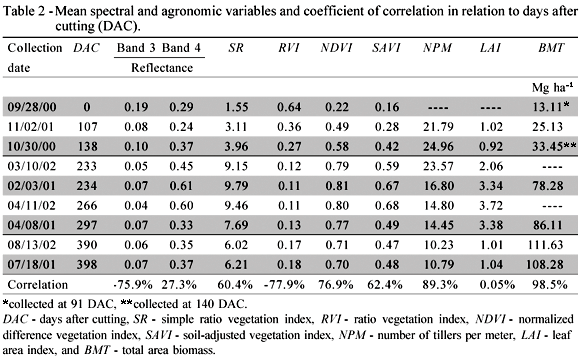Spectral information is well related with agronomic variables and can be used in crop monitoring and yield forecasting. This paper describes a multitemporal research with the sugarcane variety SP80-1842, studying its spectral behavior using field spectroscopy and its relationship with agronomic parameters such as leaf area index (LAI), number of stalks per meter (NPM), yield (TSS) and total biomass (BMT). A commercial sugarcane field in Araras/SP/Brazil was monitored for two seasons. Radiometric data and agronomic characterization were gathered in 9 field campaigns. Spectral vegetation indices had similar patterns in both seasons and adjusted to agronomic parameters. Band 4 (B4), Simple Ratio (SR), Normalized Difference Vegetation Index (NDVI), and Soil Adjusted Vegetation Index (SAVI) increased their values until the end of the vegetative stage, around 240 days after harvest (DAC). After that stage, B4 reflectance and NDVI values began to stabilize and decrease because the crop reached ripening and senescence stages. Band 3 (B3) and RVI presented decreased values since the beginning of the cycle, followed by a stabilization stage. Later these values had a slight increase caused by the lower amount of green vegetation. Spectral variables B3, RVI, NDVI, and SAVI were highly correlated (above 0.79) with LAI, TSS, and BMT, and about 0.50 with NPM. The best regression models were verified for RVI, LAI, and NPM, which explained 0.97 of TSS variation and 0.99 of BMT variation.
NDVI; vegetation index; biomass; field spectroscopy; temporal evolution








